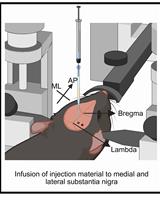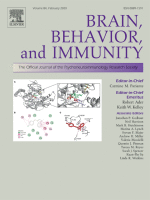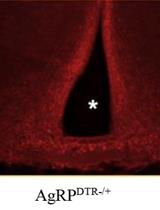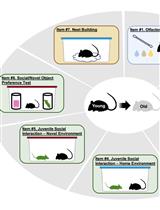- EN - English
- CN - 中文
Induction of Repeated Social Defeat Stress in Rats
大鼠持续性社交失败压力诱导
发布: 2022年02月05日第12卷第3期 DOI: 10.21769/BioProtoc.4306 浏览次数: 3543
评审: Supriya GhoshSubhi MarwariAnonymous reviewer(s)

相关实验方案

基于 rAAV-α-Syn 与 α-Syn 预成纤维共同构建的帕金森病一体化小鼠模型
Santhosh Kumar Subramanya [...] Poonam Thakur
2025年12月05日 1402 阅读
Abstract
Repeated social defeat stress (RSDS) is a model of chronic stress in rodents. There are several variants of social defeat procedures that exert robust effects in mice, but few published detailed protocols to produce a robust stress and altered immunological profile in rats. In this article, we describe the protocol for the induction of RSDS in adult male Sprague-Dawley rats. Using a resident-intruder paradigm, a physical component of stress is induced by direct attack from the resident aggressive retired breeder Long-Evans rats on the intruder experimental rats. A subsequent threat component is induced by the presence of the aggressor in the vicinity of the intruder, but with physical separation between them. The RSDS induced by this protocol produces robust immunological and behavioral changes in the experimental rats, as evidenced by development of anxiety-like behaviors in open field, social interaction, and elevated plus maze tests, as well as by changes in immune parameters (Munshi et al., 2020). This approach has been used as an ethologically relevant model of stressors that are potent enough to impact neural circuits that are similar to the neural circuits impacted in patients with depression and anxiety.
Background
Repeated social defeat stress (RSDS) is a robust model of chronic psychological stress in rodents (Rygula et al., 2005; Berton et al., 2006; Liu et al., 2017). It causes robust depression-like behavioral changes including anxiety, anhedonia, and social-avoidance (Rygula et al., 2005 and 2006; Berton et al., 2006). A unique aspect of social defeat stress that distinguishes it from other environmental stressors is that the subjects do not develop habituation of pituitary-adrenal axis activity over repeated social confrontations (Tornatzky and Miczek, 1993; Koolhaas et al., 1997), unlike many other repeated stressors, even though the subjects generate behavioral stress responses (Tidey and Miczek, 1997).
Additionally, RSDS is known to have a robust effect on immune parameters that affect anxiety behavior in rodents (Wohleb et al., 2013). Furthermore, RSDS induces anxiety-like behavior by acting via interleukin-1 type 1 receptor (IL-1R1) in the endothelial cells in the brain (Wohleb et al., 2011). RSDS-induced macrophage trafficking in the brain is required for the development of anxiety behavior, which in turn is dependent on microglia activation and recruitment of primed monocytes to the brain (Wohleb et al., 2013). Myeloid cells isolated from mice undergoing RSDS have enhanced production of interleukins (IL) and other cytokines, such as IL-1β, TNF-α, and IL-6, following toll-like receptor stimulation with the immunogen lipopolysaccharide (Stark et al., 2002; Bailey et al., 2009; Powell et al., 2009).
Social defeat procedures have been leveraged to understand the neurobiology of anxiety or depressive behaviors by examination of its effects on limbic regions. RSDS has also been shown to decrease the firing of dopaminergic neurons projecting from the ventral tegmental area (VTA) to the medial prefrontal cortex (mPFC) in mice (Chaudhury et al., 2013). In addition, this kind of stress is also known to cause a persistent neuronal adaptation in the basolateral amygdala (BLA), hippocampus, and PFC; for example, RSDS caused a decrease in apical dendritic spine density in CA1 hippocampal neurons but not in BLA neurons in rats; it also caused dendritic atrophy of CA1 basal dendrites, while increasing dendritic arborization in BLA pyramidal neurons (Patel et al., 2018). A similar stress paradigm, called chronic social defeat stress (CSDS), has been shown to decrease spine density from apical dendrites of PFC pyramidal neurons but increase BLA dendritic arborization after one month (long-term); however, it also increased BLA stellate neuronal spike density in the short-term (Colyn et al., 2019).
There is significant evidence that some variations of social defeat can preferentially produce effects on appetitive motivated behaviors (described as rodent models of anhedonia/depressive behaviors; Riga et al., 2015; Yoshida et al., 2021) versus effects on open field and maze exploration (described as rodent models of anxiety). In this context, social defeat has shown a degree of predictive validity for antidepressant drugs (Tsankova et al., 2006; Golden et al., 2011). Similar social defeat stress paradigms have recently been studied in adolescent transgenic mice to explore genotype by environment interactions resulting in the development of phenotypes in psychiatric diseases in the “two-hit” model. For example, the mice overexpressing Tcf4 developed cognitive impairments and novelty-induced hyperactivity when exposed to social defeat stress (Volkmann et al., 2021). Social defeat stress has also been used in mice to test the pharmacological effects of psychotropic drugs to investigate stress-induced immune dysregulation. For example, one study has shown that the anti-asthenic drug bromantane (Ladasten) decreased depressive-like behavior by preventing development of avoidance behavior and also by improving locomotor activity after stress. Similarly, Ladasten also prevented the stress-induced shift of CD4/CD8 T-cells towards T-cytotoxic cells and normalized their ratio in the thymus, spleen and blood of mice (Tallerova et al., 2014).
While there are published protocols for social defeat in mice, social defeat in rats, particularly repeated social defeat, has its own set of challenges. There are few detailed protocols for a repeated social defeat procedure in rats that can reliably produce a stress phenotype and altered peripheral immune function. One purpose of this article is to fill this need. The RSDS model leverages ongoing social dynamics, instead of imposing circumstances that are unusual, which provides a degree of face validity, and can potentially provide more translatable information than less naturalistic stressors for understanding several of the physiological and behavioral abnormalities induced by social stress between individuals. In our original study (Munshi et al., 2020), we used the RSDS model in adult male Sprague-Dawley rats, following a previously published protocol (Jaisinghani and Rosenkranz, 2015). This has been adapted and modified from an earlier published study using the social defeat model of stress (Berton et al., 2006).
Subjects and housing: Adult male Sprague-Dawley rats (Envigo, Indianapolis, IN) were obtained at post-natal day 59-63 and were housed 2-3 per cage in a climate-controlled facility at Rosalind Franklin University of Medicine and Science, with ad libitum access to standard rat chow diet and water. After habituating in the animal facility for at least four days, rats were subjected to RSDS or control handling. The body-weights of the Sprague-Dawley rats were 300-350 g at the start of the experiments. Lights in the housing room were on a reverse 12 h light/dark schedule (lights off: 07:00-19:00). Sprague-Dawley rats in typical laboratory conditions are fairly social and rarely attack other rats, outside of play fighting or dams that are still lactating. Therefore, an alternative is required to induce defeat. Adult male retired breeder Long-Evans rats (Envigo, Indianapolis, IN) were single-housed and used to induce social defeat stress in the Sprague-Dawley rats. Rats were randomly assigned to experimental groups, and experiments were performed in multiple cohorts. The social defeat experiments were performed in a separate procedure room within the animal facility that was dedicated for stress procedures. This separate room was approximately 8 meters away from the housing room. The experiments were performed during the dark-phase of the rats’ diurnal cycle, between 9 am and 2 pm. Residents and intruders were not housed in the same cages, as is done for some social defeat procedures in mice. In our procedure, residents and intruders only interacted during the single daily stress sessions.
Because these experiments involve stress, it was particularly important to establish humane exclusion criteria that go beyond standard humane endpoints in consultation with our institutional veterinarian. Rats were monitored daily. This included daily weighing of the rats, observation of behavior (lethargy, extreme avoidance of the experimenter), and observation of appearance (coat appearance, presence of porphyrin). If any rat displayed a combination of >15% reduction in weight, persistent porphyrin staining, lethargy, or indication of non-grooming (matted fur), it would be removed from the study. Long-Evans rats were also monitored over the course of the social defeat procedures for the same measures (observation of behavior and of appearance).
Materials and Reagents
Clean paper towels
Intruder (experimental) adult male Sprague-Dawley rats
Resident (aggressor) adult male retired breeder Long-Evans rats
Scoring sheet (Table 1)
70% ethanol
Disinfectant wipes for equipment (for example, Caviwipes Surface Disinfectant Wipes, Metrex item# 13-1100)
Table 1. Scoring sheet.
This is a standard scoring sheet that can be useful for the social defeat procedure. After submission, or if any criteria (a-c) are met, the Phase 1 session ends and the intruder rat is placed in the wire mesh enclosure. The Phase 2 session (separated by wire mesh enclosure) ends after 15 minutes. See completed sheet below for more details (Table 2).Resident Intruder Stress Protocol: Your Name: Resident rat + cage is placed in procedure room After at least 5 min, the Intruder rat is brought into the procedure room in a transport cage; the rat is placed in the cage with the Resident. Timer is started. After submission, the Intruder is placed into a smaller wire mesh enclosure within the Resident cage for 15 min END Phase 1 session after submission or:
a. 15 min with no submission
b. 10 attacks with no submission
c. 5 min with no attacks
END Phase 2 after:
a. 15 min after placement in wire mesh enclosureIntruder (Stressed) Rat Number Date Resident Rat Number Start Time Time to First Attack Number of Attacks Submitted? (Y or N) Time Separated
Comments:
Equipment
Resident rat housing cages: sanitized woodchip bedding, 21” × 11.5” × 8” height, clear polycarbonate, wire top
Rat transport cages: sanitized woodchip bedding, 12” × 6.5” × 5” height, clear polycarbonate, microisolator top
Smaller wire mesh enclosure (Figure 3): approximately 6” × 7” × 8” height, 3/4” square mesh, PVC coated
Digital stopwatch with time of day
Procedure
文章信息
版权信息
© 2022 The Authors; exclusive licensee Bio-protocol LLC.
如何引用
Munshi, S., Ritger, A. and Rosenkranz, J. A. (2022). Induction of Repeated Social Defeat Stress in Rats . Bio-protocol 12(3): e4306. DOI: 10.21769/BioProtoc.4306.
分类
神经科学 > 神经系统疾病 > 动物模型
生物科学 > 生物技术
神经科学 > 行为神经科学 > 实验动物模型
您对这篇实验方法有问题吗?
在此处发布您的问题,我们将邀请本文作者来回答。同时,我们会将您的问题发布到Bio-protocol Exchange,以便寻求社区成员的帮助。
Share
Bluesky
X
Copy link










